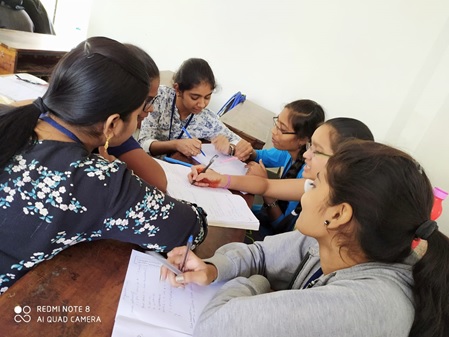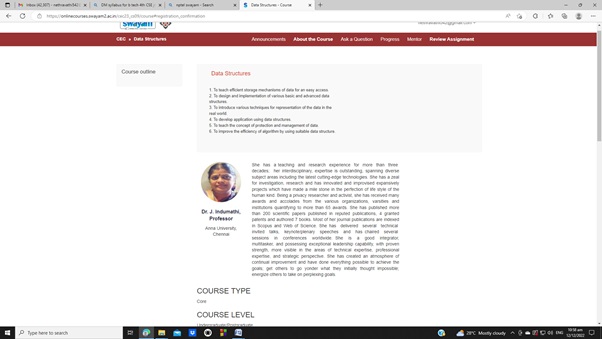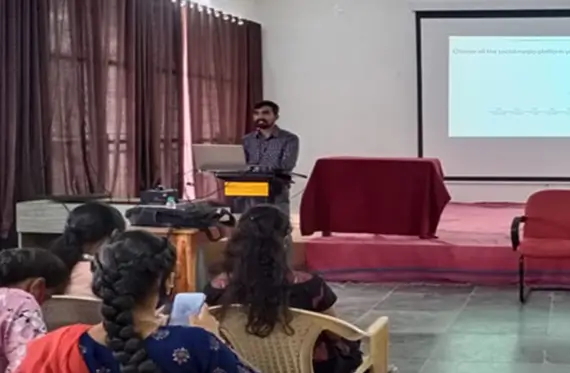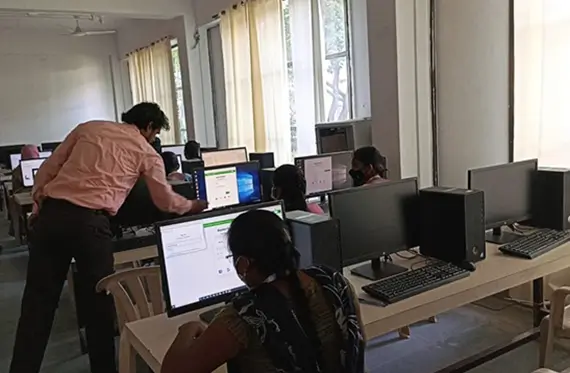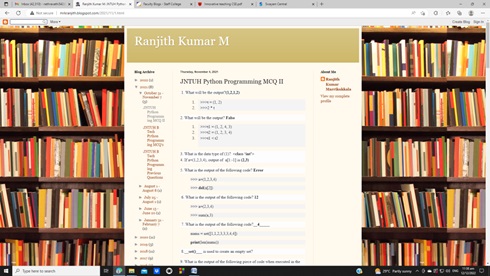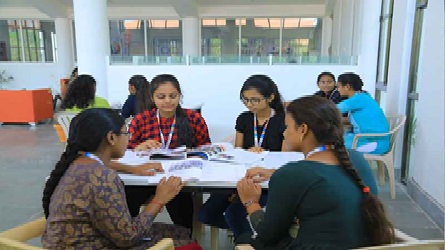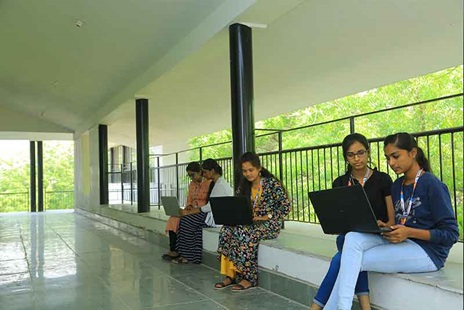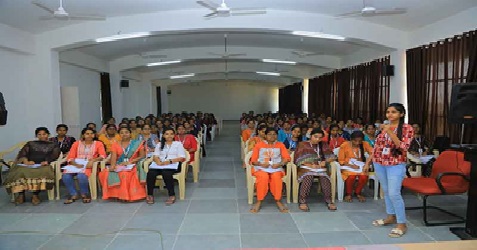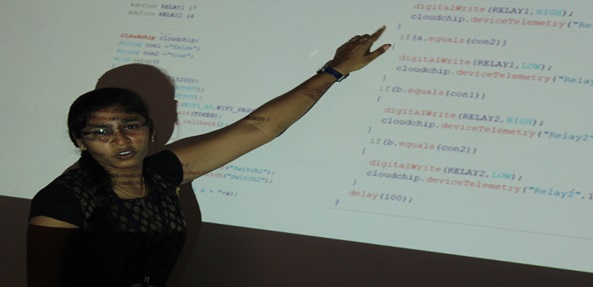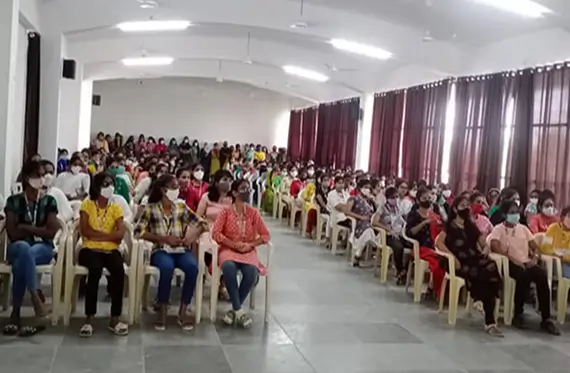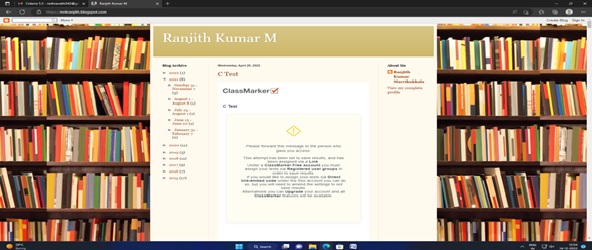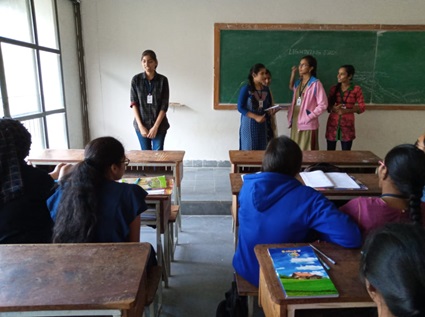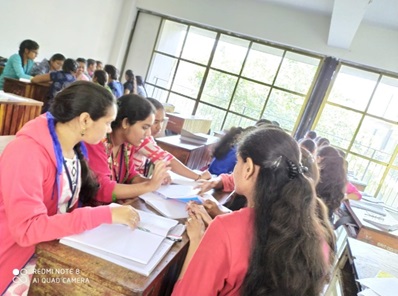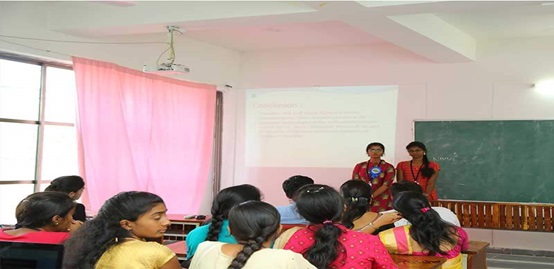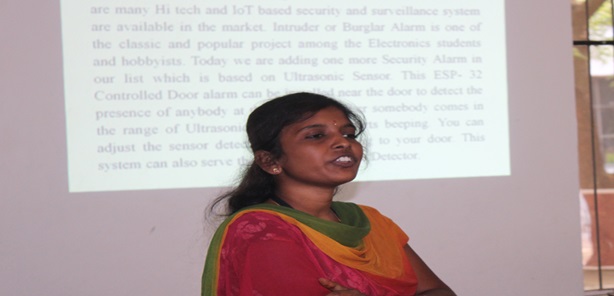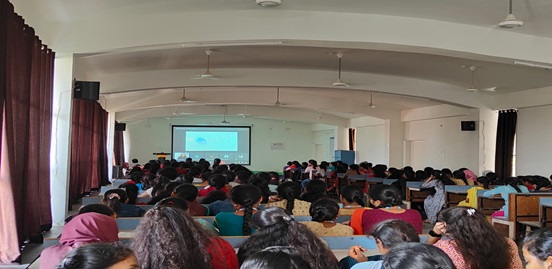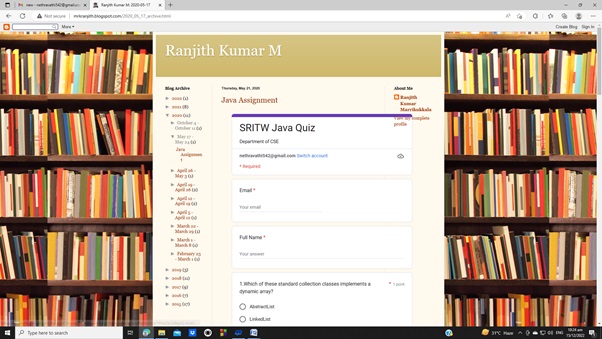Think-Pair Share
Think-pair-share (TPS) is a teaching strategy that starts with individual reflection and
moves through partner sharing to whole group discussion.
Goals of Using this strategy, the faculty:
First fosters individual thought and gives students time to brainstorm
Has students work with others to clarify and reinforce ideas
Assembles the entire class to share ideas and responses so that all
students can gain perspective and understanding
Outcome:
From the observations, the students were still lagging to understand the concept,
so to overcome this, give more time to slow learners to think and share the ideas.
Technical Training and Certification
Programming is crucial when it comes to learning how to innovate,
create very eco-friendly solutions for global problems and such.
Goals of Using this strategy are as follows:
Development of basic technical skills, Students are encouraged to think,
analyze the given problem and they have to develop their own logic to solve the given problem.
We make our students more comfortable to the world of coding.
While analyzing the solution to the given problem student must be able to correct
the errors occurred during the development process.
Enhancement of creativity, innovation, productivity and entrepreneurial skills.
Development of new and appropriate technology.
Group Discussions
The group discussion is a two-way helpful process. A candidate who goes through the process gains
clarity of his/her own thoughts, views and opinion. He / She learns how to evolve thinking
and come to a solution or conclusion for a certain topic. And on recruiter’s part,
it is helpful as they evaluate a candidate’s soft skills through Group discussion.
Goals of Using this strategy are as follows:
It is a good way to engage the participants in a fruitful discussion
Group discussion generates a creative thinking in all participants, something beyond the obvious answers and solution to a specific problem
Generate more ideas and a structured presentation of a topic
Improves analytical abilities to think on a particular given topic
Outcome:
The team can implement the problem very easily and effectively as the verbal learners help
the teams by giving requirements in the form of an algorithm and from that
the visual learners describe the flow of the program with the help of the flowcharts.
Flipped Classroom
If the traditional classroom is defined by the teacher discussing the lessons and
the students going over what they learned and doing homework related to the lesson afterwards,
the flipped classroom, as the name suggests, flips things around. In this case,
the students are asked to study the lessons on their own as they watch their teacher explain
the lessons in a prerecorded video or another medium. The next day, the students will do the assignments,
which the teacher will discuss afterwards. This either builds on or reorients the students
on what they learned as they were doing their homework.
Goals of Using this strategy are as follows:
To make the classroom an active learning environment
To enable students to learn at their own pace, and
To give the instructor more time to teach each student individually, rather than the class as a whole
Outcome:
online course contents and interactions between faculty members in science and engineering
using the best academics practices
About many courses offered by faculty in various departments and
to students at all technical levels are given here
Setting up internal resources for implementing virtual online certification programmers in science and engineering
Note Check
Note check is a pedagogic strategy that facilitates learning within the classroom.
In this strategy, students are instructed to pair up and review,
discuss and compare their notes with each other.
Goals of Using this strategy are as follows:
The aim of the strategy is to help students develop good note taking skills,
summarize key information and clarify misconceptions through discussions with partners
and to fill the gaps for any lost or misperceived information.
Outcome:
Students came to each other capability in solving the problem.
They can learn from each other as they worked in pair.
Multimedia Learning
Multimedia learning can be defined in a number of ways.
For the purposes of this research multimedia learning would be defined as
the delivery of instructional content using multiple modes that include visual
and auditory information and student use of this information to construct knowledge.
To- day our students live in a world in which digital technology is part of the texture of their daily lives.
They have never known a world without technology.
Technology is their native language and it is expected to use technology in colleges.
Goals of Using this strategy are as follows:
User enjoyment is enhanced.
Provides an excellent way to convey content.
Enables users to control web experience.
Address multiple learning styles.
Outcome:
It will help the faculty to represent the content in a more meaningful way using different media elements.
Each One Teach One
Each one, teach one is a concept that brings with it a lot of mental satisfaction
if you are involved in teaching someone or even if you are promoting the concept of spreading the awareness.
The idea of working for a social cause gives you an immense knowledge.
Goals of Using this strategy are as follows:
To improve the student skill set and this methodology helps the students to improve their presentation,
communication skills, and knowledge levels in the concepts by self-preparation and presentation.
It helps the students to enrich themselves towards self-learning and employability.
Outcome:
Improvement of self-learning
Improvement of presentation skills
Improvement of subject knowledge
Faculty Blogs
Goals of Using this strategy are as follows:
A blog facilitates the students’ critical thinking,
A blog provides examples for students for modeling and learning,
A blog affects the students’ quality of writing,
A blog facilitates meaningful learning for students,
A blog gives students a purpose for writing
Collaborative Learning (STAD)
Collaborative learning is an educational approach that involves students working in groups, or teams,
trying to solve a problem, or completing an activity. Working towards a shared common goal,
team members are interdependent in terms of their assigned tasks or outcomes,
and each team member assumes a distinctive role.
Goals of Using this strategy are as follows:
Development of higher-level thinking, oral communication, self-management, and leadership skills.
Promotion of student-faculty interaction.
Increase in student retention, self-esteem, and responsibility.
Exposure to and an increase in understanding of diverse perspective.
Outcome:
The outcomes of a team working together are greater than those possible by any one person working independently.

